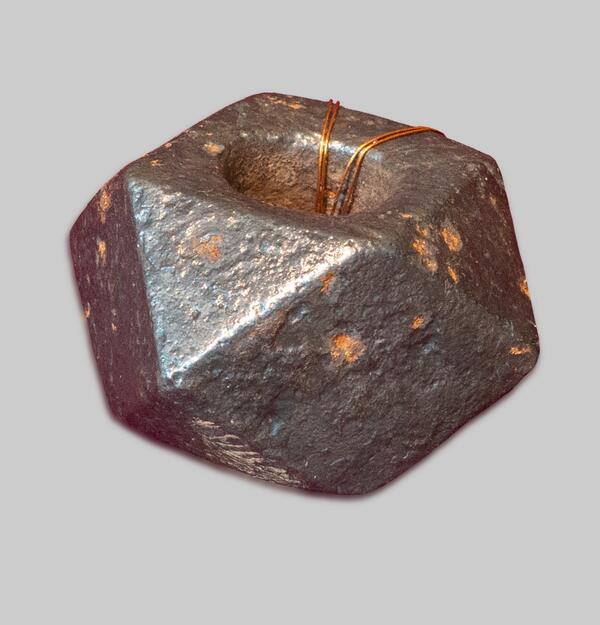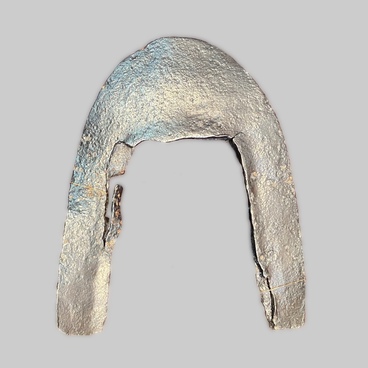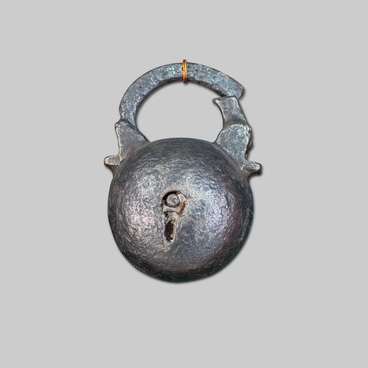Flail weight from the museum collection was found during excavations in the village of Shestaki, Belovsky district, Kemerovo region. It is a polyhedron flattened from above and from below, with a cylinder aperture inside.
A flail is a close combat cold weapon consisting of several parts. The weight is a heavy piece of forged iron with a through hole where supposedly a suspension device was attached – a belt, a swingle or a strong rope. The swingle could be attached to a wooden handle (kistenIsche). The weight resembles a balance weight of a very simple balance scale – a weight beam. As the aperture is widened, it can be supposed that the weight was either used repeatedly or was initially forged for a flail.
The flail with a metal weight was most popular in Russia in the XII–XIII cent. According to the Russian and Soviet archaeologist Anatoly Kirpichnikov, the flail in Ancient Russia was first of all deemed to be an item of military equipment of a mounted warrior used as an auxiliary weapon. In a short battle with a mounted enemy a flail could allow making a quick and sudden strike neutralizing the adversary.
In Siberia, the flail started to spread since the time of Yermak’s military expeditions. The weapon was used by the Russian service class people. Later, over XVIII -early XX cent., flails were widely used by the civilian population of the Russian Empire as a self-protection weapon.
A flail is a close combat cold weapon consisting of several parts. The weight is a heavy piece of forged iron with a through hole where supposedly a suspension device was attached – a belt, a swingle or a strong rope. The swingle could be attached to a wooden handle (kistenIsche). The weight resembles a balance weight of a very simple balance scale – a weight beam. As the aperture is widened, it can be supposed that the weight was either used repeatedly or was initially forged for a flail.
The flail with a metal weight was most popular in Russia in the XII–XIII cent. According to the Russian and Soviet archaeologist Anatoly Kirpichnikov, the flail in Ancient Russia was first of all deemed to be an item of military equipment of a mounted warrior used as an auxiliary weapon. In a short battle with a mounted enemy a flail could allow making a quick and sudden strike neutralizing the adversary.
In Siberia, the flail started to spread since the time of Yermak’s military expeditions. The weapon was used by the Russian service class people. Later, over XVIII -early XX cent., flails were widely used by the civilian population of the Russian Empire as a self-protection weapon.



